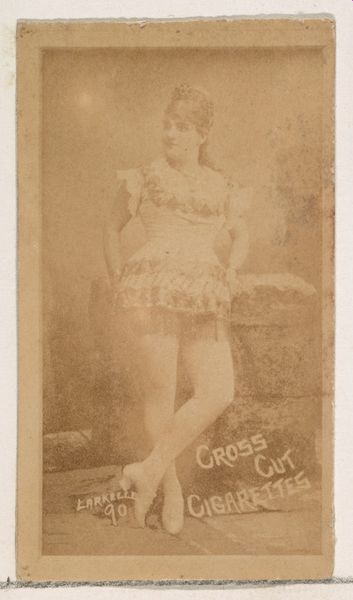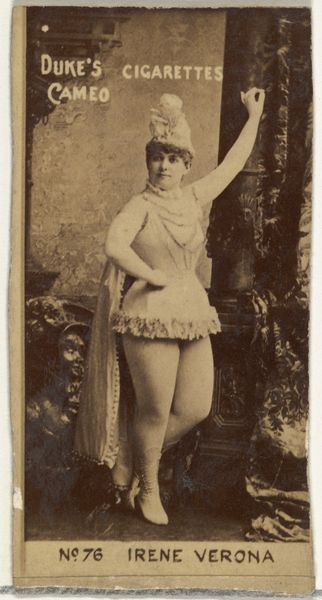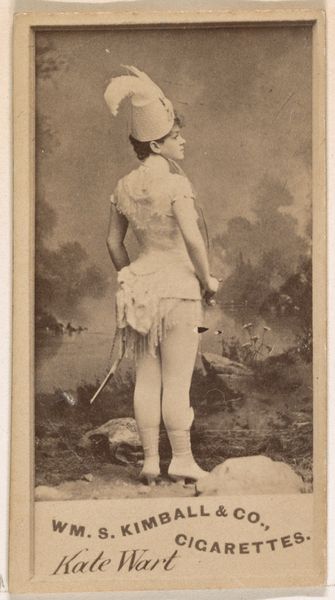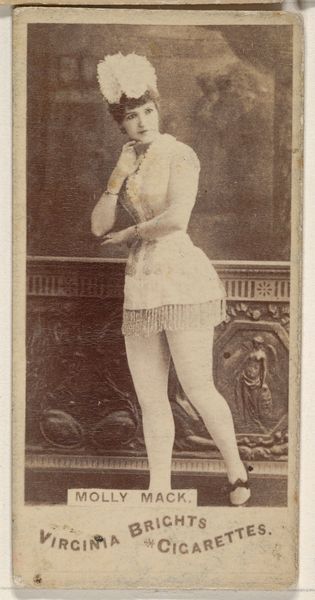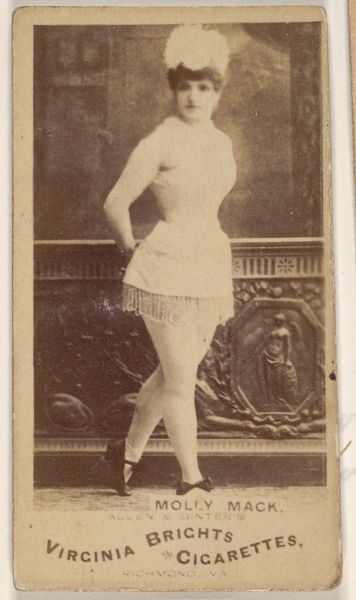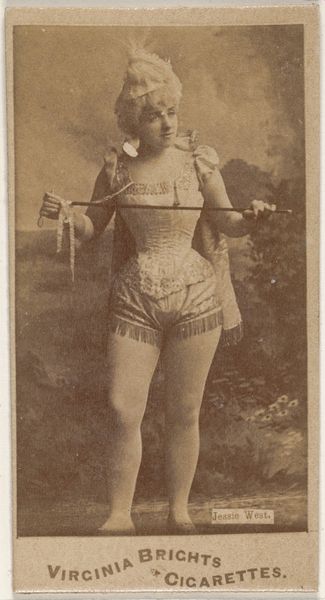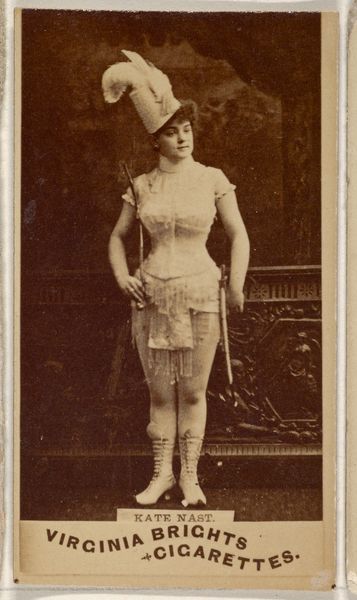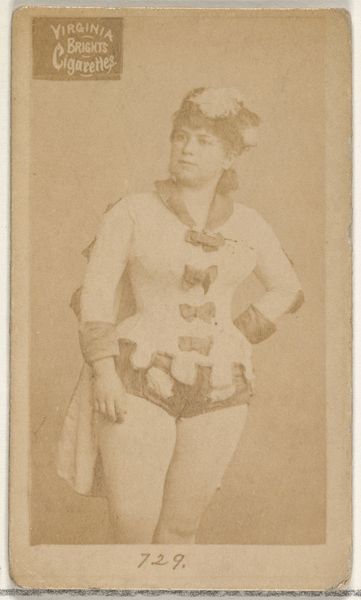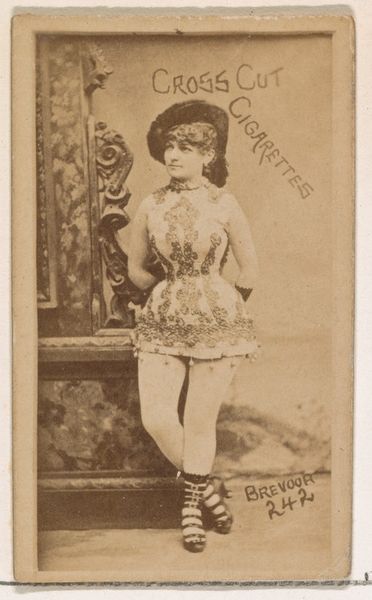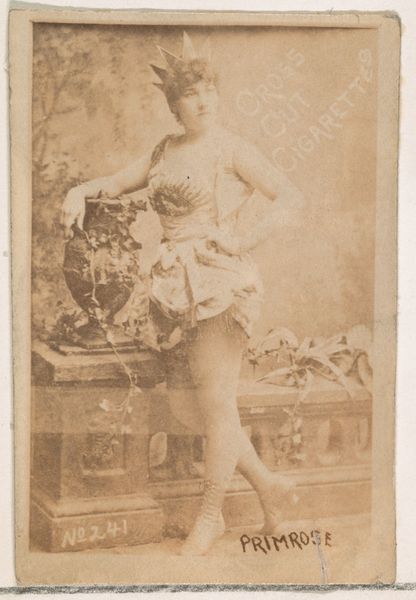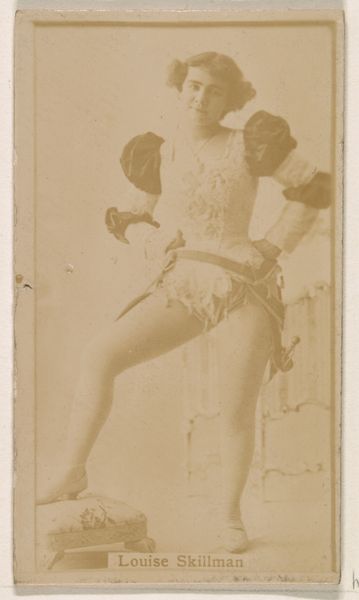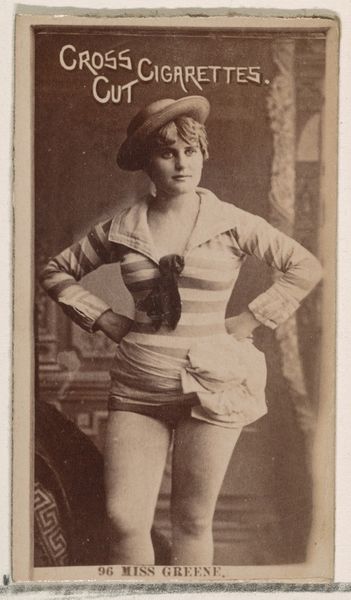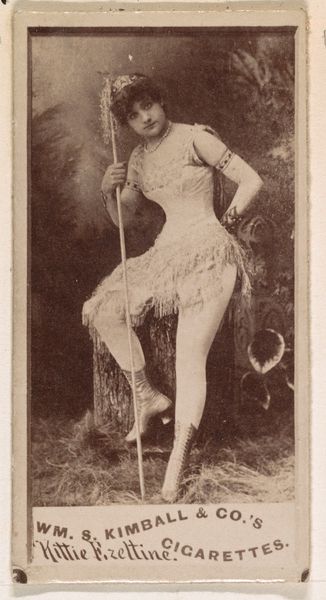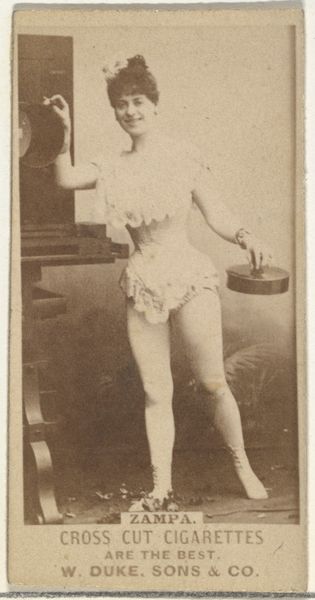
Card Number 118, Carrie Duke, from the Actors and Actresses series (N145-2) issued by Duke Sons & Co. to promote Cross Cut Cigarettes 1880s
drawing, print, photography
portrait
drawing
photography
19th century
men
Dimensions: Sheet: 2 5/8 × 1 7/16 in. (6.6 × 3.7 cm)
Copyright: Public Domain
Curator: Well, this is… evocative. There’s a real sense of performativity here. Editor: That’s right. What we’re looking at is "Card Number 118, Carrie Duke, from the Actors and Actresses series (N145-2) issued by Duke Sons & Co. to promote Cross Cut Cigarettes,” dating from the 1880s. These cards, small prints, were included in cigarette packs. Curator: So, immediate context—tobacco. Consumerism. These small cards as instruments for product endorsement and social currency. We see the industrialization of leisure through commodities. Editor: Exactly. The company, W. Duke, Sons & Co., heavily relied on new technologies for mass production and distribution. Think about the labor involved: from tobacco fields to printing presses. This is all carefully crafted to create a specific image, which has less to do with Duke herself and more with marketing a lifestyle. Curator: And Carrie Duke…she embodies idealized feminine beauty of the time, simultaneously conforming to and performing against constraints of Victorian society. Notice the costuming, simultaneously suggestive and restricted. Editor: Her agency, or lack thereof, becomes interesting. Who *was* she beyond being a model for this company's product, or if we think about "performance" from labor studies… What does this sort of advertisement work mean for the actress/model, Duke, or the female workforce overall in this era? Curator: Absolutely. Her carefully crafted gaze suggests knowingness. Is she empowered or merely an objectified pawn in the marketplace of desires? She is holding a very obvious prop across her legs: is there something subversive occurring or simply a symbol of available power? Editor: I think she represents a calculated strategy – the construction of the modern feminine identity as both commodity and consumer. The interplay of class, gender, and visual culture becomes particularly resonant. Curator: Examining it now, what is remarkable is how complex a relatively mundane mass-produced object can be. The card is more than just its face value: it functions as a window into 19th-century anxieties and aspirations. Editor: I agree. It asks us to think about the very making of cultural norms. A photograph like this—intended for fleeting enjoyment—ends up provoking lasting reflections about how we got here.
Comments
No comments
Be the first to comment and join the conversation on the ultimate creative platform.
